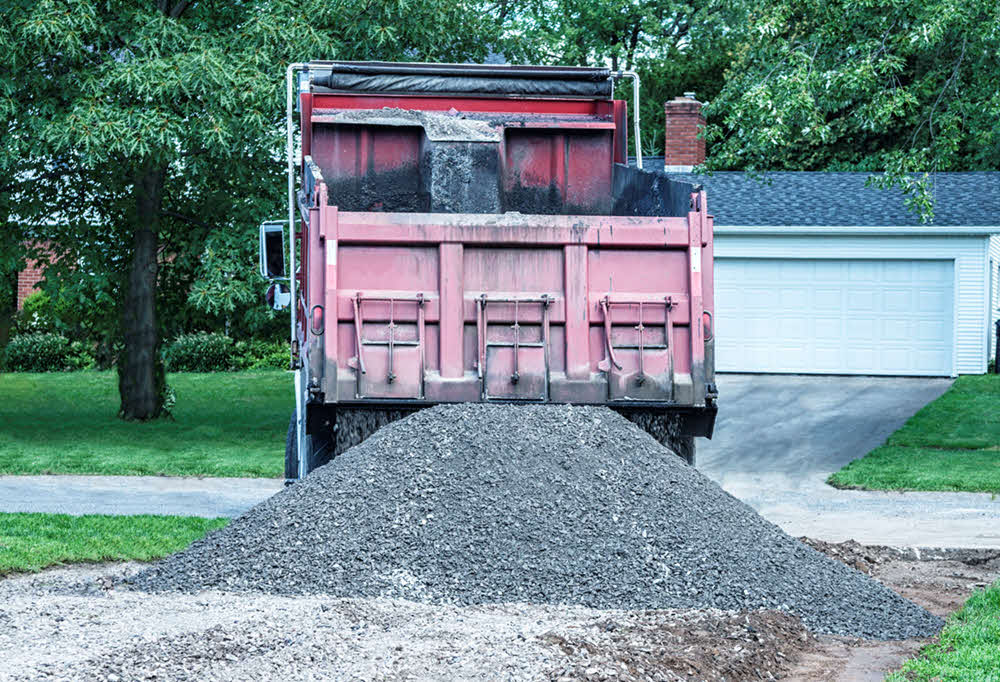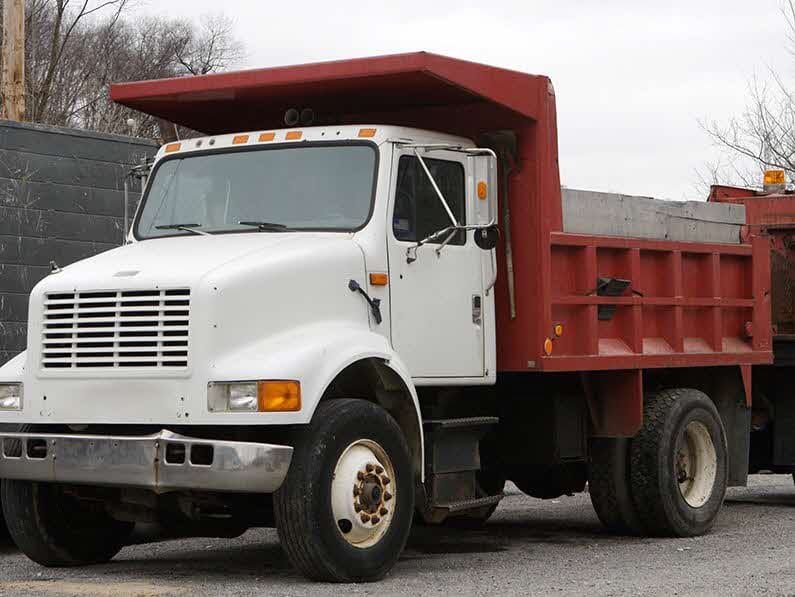Gravel Truck Rentalsin Troy MI
Gravel Trucking Services for Efficient Material Transport
We Are Locally Owned & Operated For Over 37 Years
Contact Us Today!
We Serve Businesses In And Around The Following Cities:
About Gravel Truck Rentals
Unraveling the Intricacies of Gravel Trunk Rental in Troy for Commercial Real Estate
In the heart of New York State, the city of Troy bristles with commercial properties. These buildings, whether they are office centers, retail stores, or warehouses, are frequently standing on ground strengthened and supported by a vital construction material—gravel. For many commercial property developers and managers in Troy, leasing a gravel trunk becomes an essential part of their operations.
Comprehending the Necessity of Gravel Hauling
Before delving into the process and benefits of gravel trunk rental, one needs to understand the role of the service in the construction and maintenance of commercial properties. In essence, gravel hauling involves the transport of gravel (an exceedingly useful construction material) from a quarry to a construction site. It may also involve moving gravel from one location to another within a construction or excavation site using heavy-duty trucks designed for this purpose.
For a job this substantial, one can’t resort to regular vehicles. Special trucks known as gravel trucks are designed specifically for this task with their rugged build and sizeable beds. The gravel hauling services of companies like the esteemed D&J Contracting come in handy when the task at hand exceeds the capabilities of regular construction vehicles. Such services ensure not just the hauling of gravel but also efficient and safe transportation and dumping.
The Process of Gravel Trunk Rental
Now that we’ve stressed the importance and necessity of gravel trucks, let’s discuss the process involved in renting one. First, locate gravel hauling services in your local area. Mind the proximity – ‘gravel hauling near me’ should be your goal, to minimize logistical complexities. Place a query with the renting company, outlining your needs and preferred schedule. In Troy, companies like D&J Contracting have simplified this process with their responsive service. The company not only offers an extensive fleet of gravel hauling trucks but also provides professional guidance to ascertain your exact needs.
Benefits of Gravel Truck Rental for Commercial Properties
The benefits of hiring a professional gravel hauling service are legion, particularly when considered in the context of commercial properties. First and foremost, it offsets massive costs related to buying, maintaining, and operating a fleet of gravel trucks, which can be a significant financial burden even for medium to large businesses.
Renting these trucks also ensures you get professional, skilled operators. Companies offering gravel truck rental services generally provide competent drivers who are well trained and experienced, saving you the struggle of finding qualified drivers or training your employees to operate these vehicles. Turning to professional services like those offered by D&J Contracting, you’re ensured of timely and reliable services that adhere to all local regulations.
Gravel Trucking in Action
Let’s take a brief, practical look at gravel trucking to illustrate its real-world applications. Suppose a business plans on expanding its commercial property and requires extensive land groundwork before construction can commence. They would need several tons of gravel to be hauled and spread throughout the site for optimum ground stability and improved drainage. D&J Contracting, renowned for its robust fleet and seasoned staff, would be an excellent choice. The team would deliver the required gravel on time and might even assist with spreading it on the site if needed.
Or consider a shopping center planning a vast parking expansion. They would not only need landscaping but also substantial gravel to provide a firm yet permeable base for the surface paving. Contracting a reliable and professional gravel trunk rental would make this task go by swiftly and efficiently.
Choosing the Right Gravel Hauling Service
Selecting the right gravel truck rental for your commercial properties secure successful hauling experience. While there are innumerable ‘gravel haulers in my area’ and ‘gravel truck companies near me’ searches popping up, quality and encompassing service should be your primary concern. D&J Contracting comes highly recommended in this regard. Their top-notch fleet, commitment to punctuality and safety, and trained personnel all contribute to making them a preferred choice for many commercial property developers in Troy.
Having reviewed the topic at hand diligently, we see how gravel truck rentals play a critical role in commercial property development and maintenance. Offering cost-effectiveness, efficiency, and the benefit of professional service, such rentals foster successful groundwork and construction endeavors. As you consider venturing into this realm, remember nurturing partnerships with reliable service providers like D&J Contracting can steer your project towards seamless completion. Renting gravel trucks is not merely about securing the necessary resources for your project; it’s about ensuring your project’s success by roping in professionals for the task at hand.
Gravel Truck Rentals Gallery


Call Us Today to receive your Free Quote for
Gravel Trunk Rental in Troy
Serving: Troy, Michigan

About Troy, Michigan
The earliest recorded purchases of land in what was known as Troy Township occurred in 1819. A couple of years later, a settlement known as Troy Corners was established due to Johnson Niles buying 160 acres in the region. The area is currently the north-central area of Troy. In 1827 Troy Township was established. In 1955, Troy was officially incorporated primarily as a strategy for preventing border cities from taking more land. This also helped to establish more robust city services for Troy residents, whose numbers increased rapidly during this time due to Detroiters fleeing the city for the surrounding suburbs.
It was named after Troy, New York and the ancient city of Troy as many of the early settlers, as in much of Michigan, originated from New York.
According to the United States Census Bureau, the city has a total area of 33.64 square miles (87.13 km), of which 33.47 square miles (86.69 km) is land and 0.17 square miles (0.44 km) (0.51%) is water.
| Census | Pop. | Note | %± |
|---|---|---|---|
| 1960 | 19,402 | — | |
| 1970 | 39,419 | 103.2% | |
| 1980 | 67,102 | 70.2% | |
| 1990 | 72,884 | 8.6% | |
| 2000 | 80,959 | 11.1% | |
| 2010 | 80,980 | 0.0% | |
| 2020 | 87,294 | 7.8% | |
| 2023 (est.) | 87,339 | 0.1% | |
| U.S. Decennial Census 2018 Estimate |
|||
According to a 2018 estimate, the median income for a household in the city was $96,864, and the median income for a family was $113,640. Males had a median income of $72,005 versus $52,365 for females. The per capita income for the city was $46,664. About 5.1% of families and 7.2% of the population were below the poverty line, including 6.7% of those under age 18 and 6.1% of those age 65 or over.
As of the census of 2020, there were 87,294 people, 33,822 households, and 24,300 families living in the city. The population density was 2,609.9 inhabitants per square mile (1,007.7/km). There were 34,953 housing units at an average density of 1,044.9 inhabitants per square mile (403.4/km). The racial makeup of the city was 62.2% White, 4.0% African American, 0% Native American, 27.3% Asian, 1.2% from other races, and 5.1% from two or more races. Hispanic or Latino residents of any race were 2.2% of the population.
There were 33,822 households, of which 35.4% had children under the age of 18 living with them, 60.1% were married couples living together, 8.3% had a female householder with no husband present, 3.4% had a male householder with no wife present, and 28.2% were non-families. 23.2% of all households were made up of individuals, and 10.1% had someone living alone who was 65 years of age or older. The average household size was 2.56 and the average family size was 3.05.
The median age in the city was 43.9 years. 20.7% of residents were under the age of 18; 8.8% were between the ages of 18 and 24; 32% were from 25 to 44; 28.6% were from 45 to 64; and 19.7% were 65 years of age or older. The gender makeup of the city was 50.5% male and 49.5% female.
| Race / Ethnicity (NH = Non-Hispanic) | Pop 2000 | Pop 2010 | Pop 2020 | % 2000 | % 2010 | % 2020 |
|---|---|---|---|---|---|---|
| White alone (NH) | 65,809 | 58,869 | 53,793 | 81.29% | 72.70% | 61.62% |
| Black or African American alone (NH) | 1,678 | 3,210 | 3,422 | 2.07% | 3.96% | 3.92% |
| Native American or Alaska Native alone (NH) | 105 | 124 | 108 | 0.13% | 0.15% | 0.12% |
| Asian alone (NH) | 10,713 | 15,439 | 23,788 | 13.23% | 19.07% | 27.25% |
| Pacific Islander alone (NH) | 18 | 1 | 9 | 0.02% | 0.00% | 0.01% |
| Other race alone (NH) | 79 | 125 | 312 | 0.10% | 0.15% | 0.36% |
| Mixed race or Multiracial (NH) | 1,373 | 1,502 | 2,908 | 1.70% | 1.85% | 3.33% |
| Hispanic or Latino (any race) | 1,184 | 1,710 | 2,954 | 1.46% | 2.11% | 3.38% |
| Total | 80,959 | 80,980 | 87,294 | 100.00% | 100.00% | 100.00% |
As of the census of 2010, there were 80,980 people, 30,703 households, and 22,443 families living in the city. The population density was 2,419.5 inhabitants per square mile (934.2/km). There were 32,907 housing units at an average density of 983.2 per square mile (379.6/km). The racial makeup of the city was 74.1% White, 4.0% African American, 0.2% Native American, 19.1% Asian, 0.6% from other races, and 2.0% from two or more races. Hispanic or Latino residents of any race were 2.1% of the population.
There were 30,703 households, of which 34.7% had children under the age of 18 living with them, 62.8% were married couples living together, 7.3% had a female householder with no husband present, 3.0% had a male householder with no wife present, and 26.9% were non-families. 23.4% of all households were made up of individuals, and 9.6% had someone living alone who was 65 years of age or older. The average household size was 2.63 and the average family size was 3.14.
The median age in the city was 41.8 years. 23.8% of residents were under the age of 18; 6.7% were between the ages of 18 and 24; 24% were from 25 to 44; 31.6% were from 45 to 64; and 13.8% were 65 years of age or older. The gender makeup of the city was 49.3% male and 50.7% female.
From the census of 2000, there were 80,959 people, 30,018 households, and 21,883 families living in the city. The population density was 2,413.9 inhabitants per square mile (932.0/km). There were 30,872 housing units at an average density of 920.5 per square mile (355.4/km). The racial makeup of the city was 82.30% White, 2.09% African American, 0.15% Native American, 13.25% Asian, 0.02% Pacific Islander, 0.36% from other races, and 1.82% from two or more races. 1.46% of the population was Hispanic or Latino of any race.
There were 30,018 households, out of which 36.9% had children under the age of 18 living with them, 64.5% were married couples living together, 6.0% had a female householder with no husband present, and 27.1% were non-families. 22.8% of all households were made up of individuals, and 7.8% had someone living alone who was 65 years of age or older. The average household size was 2.69 and the average family size was 3.23.
In the city 26.2% of the population was under the age of 18, 6.7% from 18 to 24, 29.8% from 25 to 44, 27.1% from 45 to 64, and 10.2% who were 65 years of age or older. The median age was 38 years. For every 100 females, there were 98.1 males. For every 100 females age 18 and over, there were 94.8 males.
From 1990 to 2000, of all of the municipalities in Oakland, Wayne, and Macomb counties, Troy had the highest numeric growth in the Asian population. It had 4,932 Asians according to the 1990 U.S. Census and 10,730 according to the 2000 U.S. Census, an increase of 5,798. The increase gave Troy the largest Asian-American population in the tri-county area, surpassing that of Detroit.
Troy uses the council–manager form of government, and thus is governed by a city council consisting of a mayor and six council members. The current mayor is Ethan Baker, who was elected to a four-year term on November 5, 2019. The city council appoints a City Manager, who manages the day-to-day operations of the city.
The City of Troy and City of Clawson on its southern border compose Michigan’s 41st District for State Representative. The district is currently represented by Padma Kuppa in the State House since 2019, and in the state Senate by Mallory McMorrow, since 2019. The district was previously represented in the State House by Martin Howrylak since 2013, and in the state Senate by Marty Knollenberg, since 2015. On the national level, Troy was part of the 9th district, represented by Joe Knollenberg from 1993 to 2009 and Gary Peters, who defeated Knollenberg in a highly publicized race in November 2008. Nationally, Troy is part of the 11th district, held by Democrat Haley Stevens.
Troy is the location of Walsh College, a business school, as well as branches of the University of Phoenix, Northwood University, Central Michigan University, Spring Arbor University, International Academy of Design and Technology, and Michigan State University.
There are seven school districts serving Troy; however, Troy School District serves the majority of the city limits. The district has multiple elementary schools, four middle schools, and two zoned high schools: Troy High School and Athens High School.
Three school districts have sizable portions of territory in Troy and operate at least one elementary school within the city: Avondale School District, in the north and northwestmost portion of the city; Birmingham City School District, in the southwestmost portion; and Warren Consolidated Schools, in the southeast, which operates Susick Elementary within the city. In addition, two other school districts are located in part in Troy but have no schools within the city limits: Bloomfield Hills School District, with a portion of the northwest part of the city, and Royal Oak School District, which has a very small portion of the southern part of the city. Finally, a small area of commercial property also in the south lies within the borders of Lamphere Public Schools
The Troy School District also hosts the eastern campus of the International Academy. Private schools include Bethany Christian School, Brookfield Academy, Oakland Children’s Academy, St. Mark Christian Academy and Troy Adventist Academy.
Call Us Today to receive your Free Quote for
Gravel Trunk Rental in Troy
Related Services in Troy, Michigan
We Serve Businesses In The Following Zip Codes:
48007, 48015, 48021, 48026, 48035, 48036, 48038, 48042, 48043, 48044, 48045, 48046, 48047, 48048, 48050, 48051, 48066, 48071, 48080, 48081, 48082, 48083, 48084, 48085, 48088, 48089, 48090, 48091, 48092, 48093, 48098, 48099, 48225, 48230, 48236, 48310, 48311, 48312, 48313, 48314, 48315, 48316, 48317, 48318, 48397